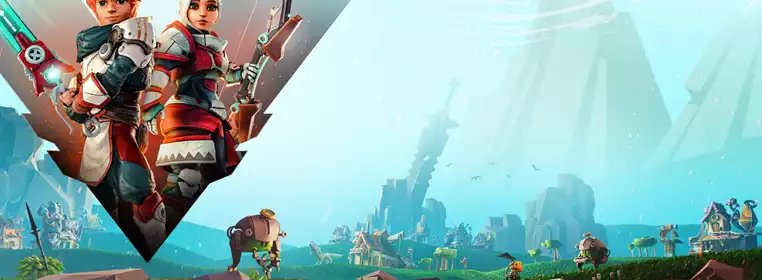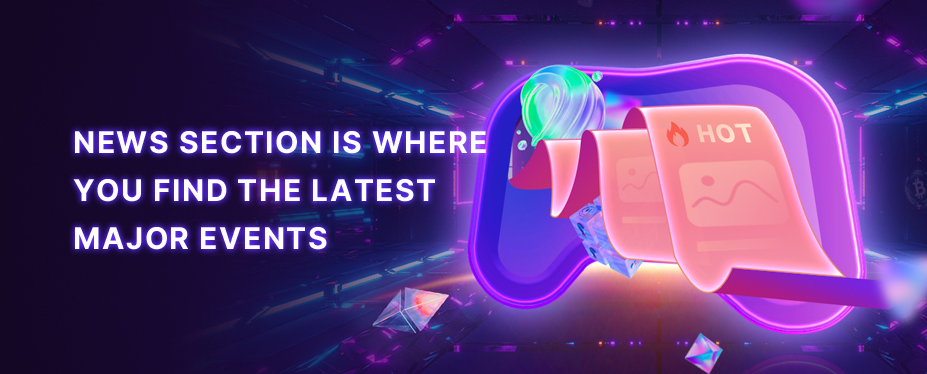Ember Sword preview: Inside the ambitious MMO aiming to convince gamers on NFTs

When asked about where he wants to see his team’s game, Ember Sword, end up in ten years, Mo Fadl tells me he wants to make a game that “creates lasting memories”. Fadl is the Chief Publishing Officer at Bright Star Studios, a team based in Copenhagen, Denmark that’s building a brand new MMO from the ground up.
The concept of Ember Sword is ambitious. We’ve seen MMOs such as World of Warcraft and Final Fantasy 14 take off before, but neither work quite the same as this. Ember Sword’s party trick? It can be accessed from almost any device that supports a browser, from anywhere with a basic 3G connection.
Bright Star Studios invited GGRecon out to its home city of Copenhagen to see exactly what the team is up to and try the game first-hand to see how it’s shaping up. There’s a lot of programming magic going on here, as well as the utilisation of technology that gamers specifically aren’t totally sold on just yet. From first impressions, it certainly seems as though the team behind it has some impressive ideas, and is taking cautious steps to realise them.
For our play session of Ember Sword, we were tasked with completing the upcoming dungeon release, the ‘Ultra Deep’, which is set to be playable as part of a public playtest between October 27 and 29. We choose our weapons of choice and armour, which are divorced from the game's classes, and provide varying abilities, buffs, and debuffs to our character stats.
From there, we advance through the level, which is adorned with truly gorgeous art design. Filled with muted, pastel-esque colours, the art is described fondly as ‘wonky’ by the design team in the studio. Staff remarked that, quite often, they’ll get feedback to make the art look a little more ‘wonkified’ before it’s applied to the game.
The Ultra Deep is familiar in its design, with waves of basic enemies attacking our group, accompanied by a mid-level boss and an end-boss. The bosses in particular are extremely challenging, with our squad only defeating the final enemy on our second attempt, and even then by the skin of our teeth.
What’s most impressive about this demo is that it’s running entirely in a Google Chrome browser. Running on a whirring gaming laptop sitting beside me, an FPS counter reliably informs me that it’s pushing a solid 120fps almost the entire time.
This is part of the grand vision behind Ember Sword, with its lengthy white-paper document explaining that the game is intended to be a “free-to-play platform-agnostic MMORPG’ that ‘empowers social gameplay’. The idea is that anyone with a browser-enabled device can log into Ember Sword from anywhere in the world and access their online avatar.
Cutting-edge tech
The technology that’s powering all of this is a proprietary engine, built from the ground up by Bright Star Studios' in-house tech prodigy and co-founder, Joris Huijbregts. After Ember Sword began development in the Unity engine in 2018, Joris quickly saw that the engine just wasn’t suitable to deliver the experience that they needed for this project. So, in 2021 working alongside the team's Lead Architect, he established his own engine that after four months of prototyping was capable of outperforming Unity by a factor of five in terms of frame time.
The engine itself is packed down into a file size of just 3.5 megabytes, and the ‘wonkified’ art style of Ember Sword contributes to creating assets that can be compressed down extremely small, running on almost all modern devices. For context, the entire Ultra Deep dungeon playtest takes up around 40 MB, which Huijbregts tells me could easily be 400 MB in any other engine.
The way this technology works is via streaming, but not in the same way as Google Stadia or Xbox Cloud Gaming. Ember Sword is actually running natively on every device it’s played on, with game data streaming through at a steady pace as you play through sections of the game. That means no input lag, and about as much data used as you would watching a YouTube video in the same amount of time.
The benefits of this technology are, of course, huge. For one, it means that players never have to contend with massive download times for updates. Since most of the data is held server-side, Bright Star can deploy an update while the game is still live, and players will see those changes in real time.
What’s more, it makes Ember Sword immediately more accessible to more markets. CEO and Founder Mark Laursen said, “I think that we’re at a paradigm shift whereby using technology like this, we will truly amass a ton of gamers in Latin America, Africa, Asia, etc, where they have a worse infrastructure, where they don’t have supercomputers.”
The elephant in the room
As for what else you can get up to in Ember Sword, I asked Game Producer Maxim Zimnukhov, who previously led the gameplay design team on Gwent at CDProjekt Red and had a role working on Cyberpunk 2077. He said, “You can expect some of the things that are classic in MMOs, so you can fight monsters and complete other challenges, but our secret sauce is the exchange of value between players.”
The exchange of value he’s referring to isn’t just in the form of emotional memories created by organic player moments, but also the nature of its tradable in-game items, which appear in the form of NFTs. Items including armour pieces, weapons, and even plots of land all appear in the game as Non-Fungible Tokens, logged on the Ethereum Blockchain, and tradeable for a cryptocurrency token called $Ember.
Since cryptocurrency awareness has risen drastically over the last several years, we’ve seen a smattering of other games try to adopt it in some way. However, the predatory approach of what Laursen calls ‘bad actors’ has given the technology a bad name in his opinion, with plenty of gamers already sceptical of any other title to include a whiff of it.
As such, Bright Star has an uphill battle ahead of it to win gamers over in its new approach to monetisation. That said, Laursen thinks that the way Ember Sword handles monetisation isn’t all the different from how many game systems currently operate, with NFTs actually benefitting players in plenty of ways.
Compared to other games like World of Warcraft and Counter-Strike, both of which have community markets and tradeable items for real-world cash, NFTs registered on a Blockchain provide a newfound level of transparency, according to Laursen. “The Blockchain works as a ledger, so you can see any transaction that happens. If we did something, every user can see that we’re not being good guys.
“Secondly, the [Blockchain] ledger also tracks item history. Let’s say you wear one of these cosmetics while streaming, you can embed a gameplay moment into that token and carry it with you, your achievements, etc. So if you trade it with somebody else, all those things carry over and it has this long item history embedded into it that we can’t mess with,” Laursen continues.
Essentially, it sounds a lot like Stat-Trak weapons from Counter-Strike, but with plenty more detail and hosted on a decentralised database that puts more power in favour of the player - powered by cryptocurrency.





